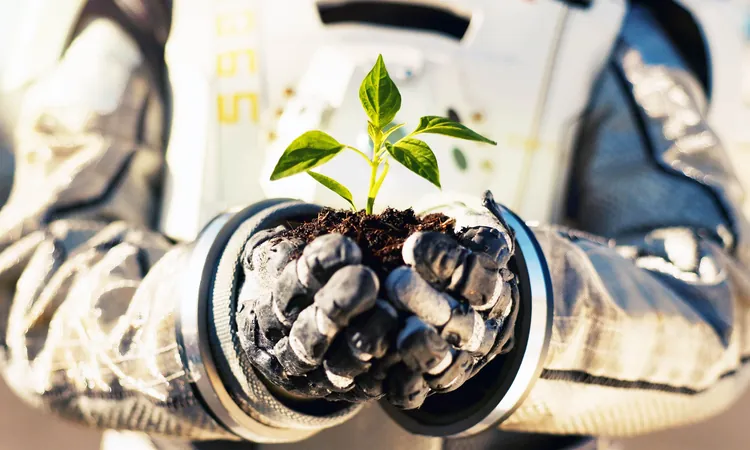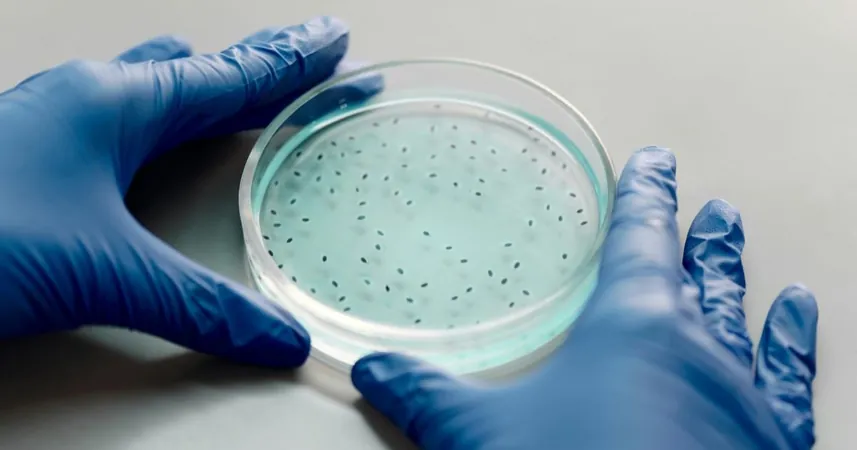
NASA’s Ambitious Goal: Cultivating Delicious Lettuce and More on Mars!
2025-01-12
Author: Daniel
NASA’s Ambitious Goal: Cultivating Delicious Lettuce and More on Mars!
NASA is on an exciting mission to revolutionize space travel by ensuring that astronauts have access to fresh, nutritious produce during their adventures on the Moon and Mars. While sealed food packets serve a purpose, they can often lose flavor and essential vitamins over time. Therefore, NASA is exploring innovative ways to grow leafy greens and other vegetables in space, enhancing both dietary value and crew morale.
The Importance of Plants in Space Exploration
Leading this groundbreaking research is Gioia Massa, who focuses on understanding plant behavior in microgravity. By studying how factors such as humidity and light affect plant development, her team aims to enhance the taste and nutritional quality of crops grown in space. With the vision of deep space exploration, NASA recognizes that healthy plants are essential for sustaining human life beyond Earth.
Successful Experiments in Microgravity Agriculture
One prominent study, known as Plant Habitat-07, investigates how lettuce responds to different moisture levels in a specialized growth chamber designed for microgravity conditions. This research is crucial since both over-saturation and drought can severely affect plant health. By manipulating watering conditions, NASA is finding the perfect balance to promote strong, nutritious leaves that maintain their flavor.
Further experiments, including Veg-04A and Veg-04B, have revealed that adjustments in light quality and nutrient formulas can significantly enhance the taste and appearance of plants. By switching LED lights and tweaking fertilizers, researchers have successfully grown a variety of crops, including lettuce and tomatoes, which have received positive taste feedback from astronauts.
Understanding Plant Adaptations and Genetic Changes
Research with Arabidopsis thaliana has unveiled that microgravity alters gene expression, impacting how plants manage their resources. This discovery could lead to genetic modifications to enable plants to thrive in the unique conditions of space. Scientists are now looking at the role of plant hormones, such as auxins, which guide growth direction. Interestingly, the response to microgravity varies among species, providing insights crucial to optimizing growth chambers for different crops.
Engineering Resilient Space Plants
Plants adapt in surprising ways to the challenges of microgravity. Some develop weaker structural tissues, while others might strengthen their cell walls. NASA is using advanced lab techniques to analyze the molecular changes that occur and to determine which plant varieties are best suited to space environments. By refining these conditions, NASA hopes to cultivate robust plants capable of withstanding the rigors of low gravity.
Preparing for Future Mars Missions
The goal of incorporating fresh salad greens into astronauts' diets during space missions is just the beginning. NASA seeks to embark on long-duration missions, where sustaining the crew with fresh produce is vital. The successes achieved thus far suggest that growing food in space is not only feasible but could also radically improve astronauts' diets, enhancing their overall well-being during lengthy missions.
With ongoing research and collaboration from experts like Gioia Massa, NASA is paving the way for feasible in-space agriculture. As more crops undergo rigorous testing for taste, nutrition, and longevity, humanity edges closer to realizing the dream of sustainable space farming.
The implications of this research extend beyond just tasty salads; it lays the groundwork for sustaining future generations of explorers on distant planets, making interplanetary living a tangible reality.
Stay tuned as we track NASA's progress in this thrilling journey toward food independence in the stars!


 Brasil (PT)
Brasil (PT)
 Canada (EN)
Canada (EN)
 Chile (ES)
Chile (ES)
 Česko (CS)
Česko (CS)
 대한민국 (KO)
대한민국 (KO)
 España (ES)
España (ES)
 France (FR)
France (FR)
 Hong Kong (EN)
Hong Kong (EN)
 Italia (IT)
Italia (IT)
 日本 (JA)
日本 (JA)
 Magyarország (HU)
Magyarország (HU)
 Norge (NO)
Norge (NO)
 Polska (PL)
Polska (PL)
 Schweiz (DE)
Schweiz (DE)
 Singapore (EN)
Singapore (EN)
 Sverige (SV)
Sverige (SV)
 Suomi (FI)
Suomi (FI)
 Türkiye (TR)
Türkiye (TR)
 الإمارات العربية المتحدة (AR)
الإمارات العربية المتحدة (AR)